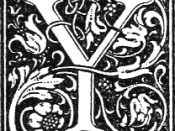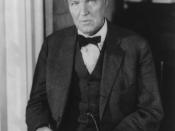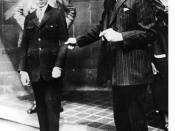The crime that captured national attention in 1924 began as a fantasy in the mind of eighteen-year old Richard Loeb, the handsome and privileged son of a retired Sears Roebuck vice president. Loeb was obsessed with crime. Despite his high intelligence and standing as the youngest graduate ever of the University of Michigan, Loeb read mostly detective stories. He read about crime, he planned crimes, and he committed crimes, although none until 1924 were crimes involving physical harm to a person. For Loeb, crime became a sort of game; he wanted to commit the perfect crime just to prove that it could be done.
Loeb's nineteen-year old partner in crime, Nathan Leopold, was interested in ornithology, philosophy, and especially, Richard Loeb. Like Loeb, Leopold was a child of wealth and opportunity, the son of a millionaire box manufacturer. At the time of their crime, the brilliant Leopold was a law student at the University of Chicago and was planning to begin studies at Harvard Law School after a family trip to Europe in the summer.
Leopold already had achieved recognition as the nation's leading authority on the Kirtland warbler, an endangered songbird, and frequently lectured on the subjects of his ornithological passion. As a student of philosophy, Leopold was attracted to Friedrich Nietzsche. Nietzsche's influence on early twentieth century academics was powerful, and the merits of ideas contained in books like his Beyond Good and Evil were fiercely debated in centers of learning like the University of Chicago. Leopold agreed with Nietzsche's criticism of moral codes, and believed that legal obligations did not apply to those who approached "the superman." Leopold's idea of the superman was his friend and lover, Richard Loeb.
Loeb and Leopold had an intense and stormy relationship. At one time Leopold contemplated killing Loeb over a...


